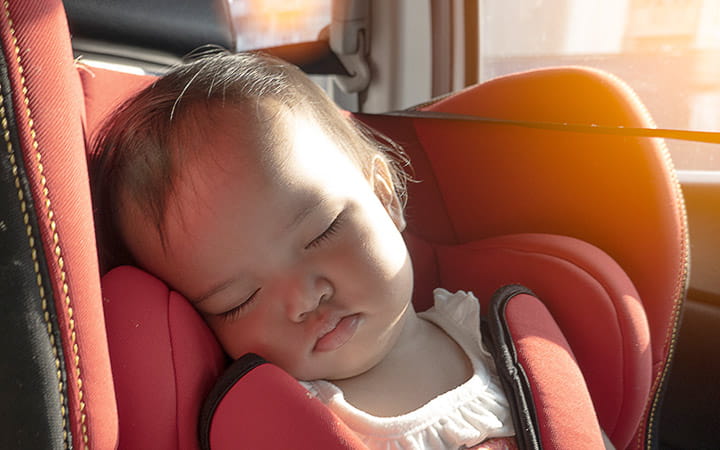Unattended Kids in Cars: A Dangerous Situation
August 08, 2021
 University Hospitals Rainbow Babies & Children'sExperts in Children's Health
University Hospitals Rainbow Babies & Children'sExperts in Children's Health

You may be tempted to leave your young child or infant in the car for a few minutes when you run into the store, or to let a sleeping baby or toddler remain in the car when you get home. But leaving a child in the car alone is never a good decision.
Even when the weather outdoors is cool with temperatures in the 60s, the temperature inside your vehicle can quickly rise well above 110 degrees – the temperature inside a vehicle can rise almost 20 degrees within the first 10 minutes. Cracking a window does little to keep the inside of a car cool.
When the body’s thermostat is overloaded by heat, hyperthermia and heat stroke – the most severe form of hyperthermia – can happen. Children are at great risk for this, because a child’s body heats up three to five times faster than an adult’s.
Read on for more information about the dangers of unattended kids in vehicles from the UH Rainbow Childhood Injury Prevention Center.
Why Children Are Left Alone in Vehicles
Not all instances of unattended children in vehicles is due to a busy parent intentionally leaving a child in a car to sleep or dashing into a store on an errand. In most situations, children are alone in vehicles for one of these three reasons, according to Safe Kids Worldwide.
- In about 51 percent of cases, children are “forgotten” by a very distracted driver, often because of a change in routine.
- In about 30 percent of cases, children climb into an unlocked car or trunk to play without an adult’s knowledge. They become confused by the door opening mechanism or trapped in the trunk and are unable to escape before heat stroke occurs.
- In about 20 percent of cases, children are intentionally left alone by a driver running an errand.
Tips To Keep Your Little One Safe
It’s not hard to become distracted when you are a new, sleep-deprived parent or when your routine is disrupted – for example, you don’t usually drop off at day care but are doing it for this one day.
The best way to be sure you never leave a child in a vehicle by mistake is to leave something you will need at your destination on the floor of the back seat, such as your cell phone, purse, briefcase, gym bag or something else you always carry.
You also can set a reminder on your cell phone or office email calendar to ask, “Did you drop off at daycare today?” Or arrange to have your day care provider call if you are more than a half-hour late with your child.
Also:
- Tell your children they are not allowed to play in a vehicle without an adult present.
- When you park your vehicle, visually scan your vehicle’s interior before walking away.
- Always lock the doors and trunk when your car is parked – even at home.
- Keep your keys and key fobs out of children’s reach.
- If your child is missing, check your vehicle – including the trunk.
What To Do If You See a Child Alone in a Car
If you see a child alone in a hot vehicle, the best thing you can do is to call 9-1-1 immediately. Wait by the vehicle so emergency medical service workers can find you quickly. They are trained to assess a situation and determine if the child is in serious trouble.
If you determine from looking inside the vehicle that the child is severely impaired, you could provide bystander care. Remove the child from the car and begin to slowly cool and lower the body temperature by using a cool water mist or wipes until help arrives.
Related Links
The Childhood Injury Prevention Center at UH Rainbow Babies and Children's Hospital works with children and families inside and outside the hospital to help kids of all ages learn and practice safe habits and aid parents in protecting children from the most common risks to child health and well-being. Learn more about the UH Rainbow Childhood Injury Prevention Center, including how to get help selecting, installing, or using a child car seat.
Tags: Safety


